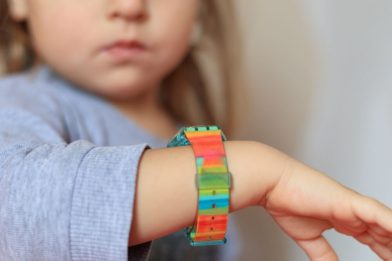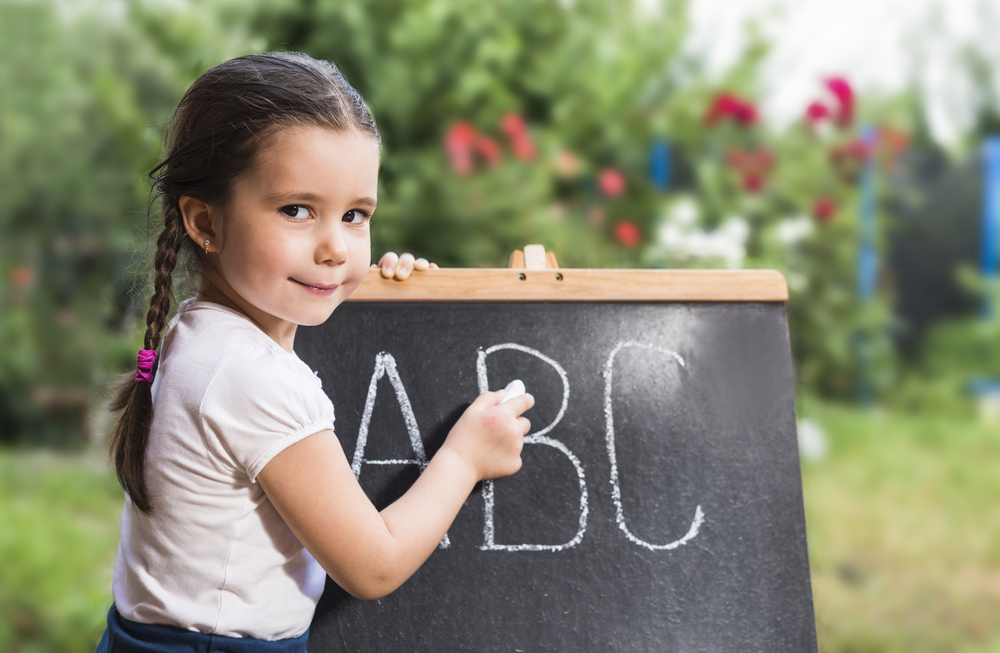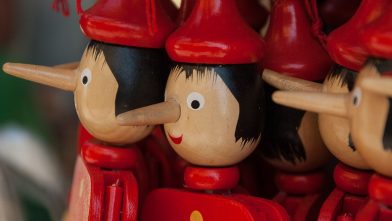Proven Ways of Quickly Memorizing the Multiplication Table
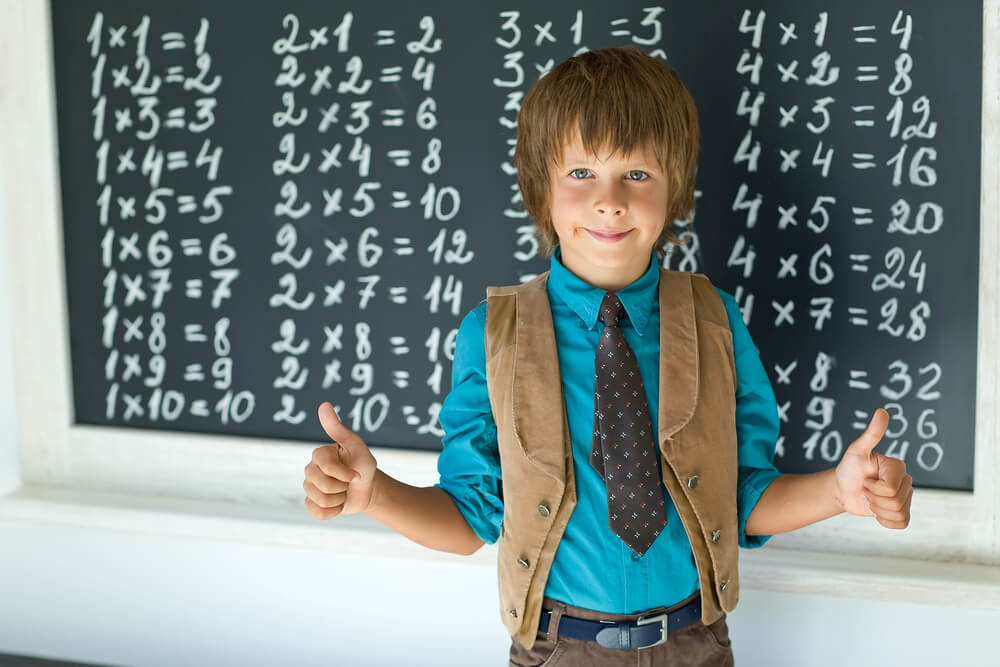
When your child is entering third grade, it is better for them to know the multiplication table by the first half of the school year. In most educational systems, it is the parents who are responsible for learning the multiplication table with their child, and if your son or daughter is already in third grade, or if they did not have time to master this topic covered in their classes, there will be not much time left to master the multiplication table.
If you still don’t know how to quickly learn the multiplication table, here are some simple and well-tested methods!
Contents:
- How to Ignite the Child’s Interest?
- Learning the Multiplication Table: What Should We Start With?
- The Best Ways of Memorizing the Multiplication Table Quickly and Easily
- Lifehack: Multiplying With the Help of Your Fingers
- Quick Learning: Multiplication Table Training Exercises
- Tips for Parents and Small Tricks
How to Ignite the Child’s Interest?
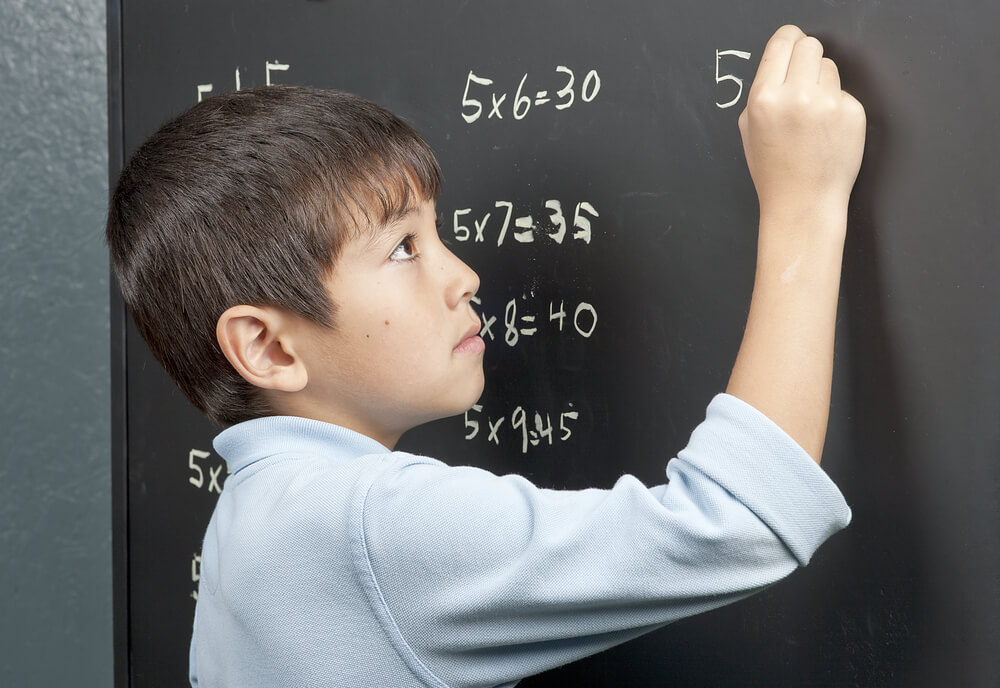
Gregory Johnston/Shutterstock.com
It is very rare for a child to enjoy and understand something that is abstract in nature, and the multiplication table falls into the category of the abstract for a younger child, as they do not see how they could apply it in real life.
To ignite interest and have the child learn the multiplication table faster, show them how the table can be useful in everyday situations.
For example, offer your son or daughter to save $1 a day for a week and to calculate the sum that they will have over this period of time in advance. Firstly, let the child add the number 1 seven times, and then show them the “magic”: tell them that there is no need to add the same number over and over again, they rather need to multiply it by the required number of times. In our example, the child will save up a total of $1 x 7 = $7 over the period of one week.
Of course, calculations are important not only for finance management purposes. Explain to the child that they can easily and quickly calculate the following, by using the multiplication table:
- how many candy bars will be needed for gifts to friends (for instance, 2 bars for 5 friends, 2 x 5=10);
- how many people will go on vacation if you and some other families are going (for example, 3 x 4 = 12 people);
- the right number of moves in board games based on the rules of the multiplication table.
When a child will realize that the multiplication table will allow them to quickly learn numbers that are applicable to them, they will be much more willing to learn a new way of adding numbers up!
Learning the Multiplication Table: What Should We Start With?

Ground Picture/Shutterstock.com
If the child is naturally curious, they will already have seen the multiplication table around: in books, textbooks, on the wall of their classroom or on the back of their notebooks, and, most likely, they can already imagine the number of additions and results that they will have to memorize.
Let your child know that there is absolutely no need in trying to just learn the multiplication table by heart!
Here is what needs to be done as a start, in order to to learn the multiplication table:
- find a place for a colorful poster with the image of the multiplication table in the child’s room—this way, it would be easier for children to memorize something that is constantly in front of their eyes;
- help your child to learn the basics and the principles of multiplication: for example, that 2 x 2 is the same as 2 + 2, 3 x 4 is 3 + 3 + 3 + 3, etc.;
- demonstrate the principles of multiplication through some real-life examples: you can count the sweets in a box, wheels on cars and legs on small insects.
The Best Ways of Memorizing the Multiplication Table Quickly and Easily
Here are some easy-to-understand and well-performing options to learn the multiplication table with the child:
Pythagoras Table
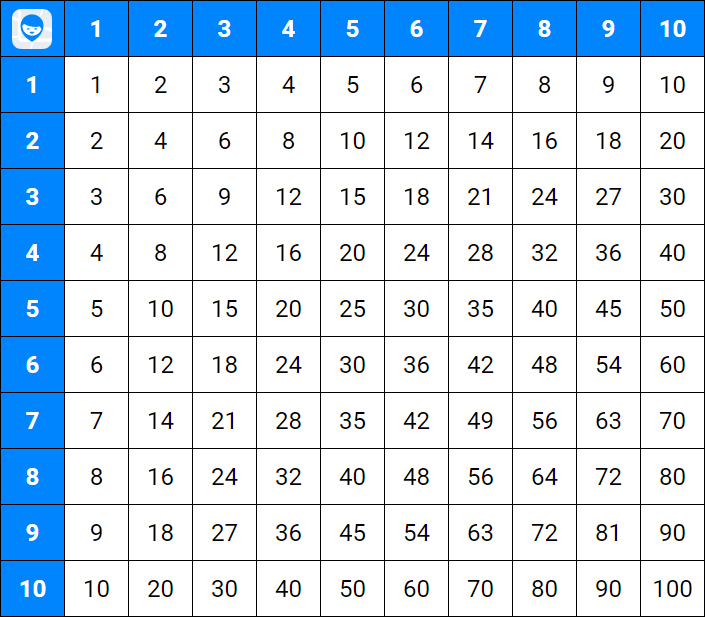
The classic multiplication table can look scary due to its large size, in which the child will need to memorize 100 factor combinations and their results.
Replace the common table with the Pythagoras table and the child will only have to learn 36 calculations instead of 100.
How to learn to multiply with the help of the Pythagoras table:
- Create a Pythagoras table that will only contain the numbers to be multiplied against each other.
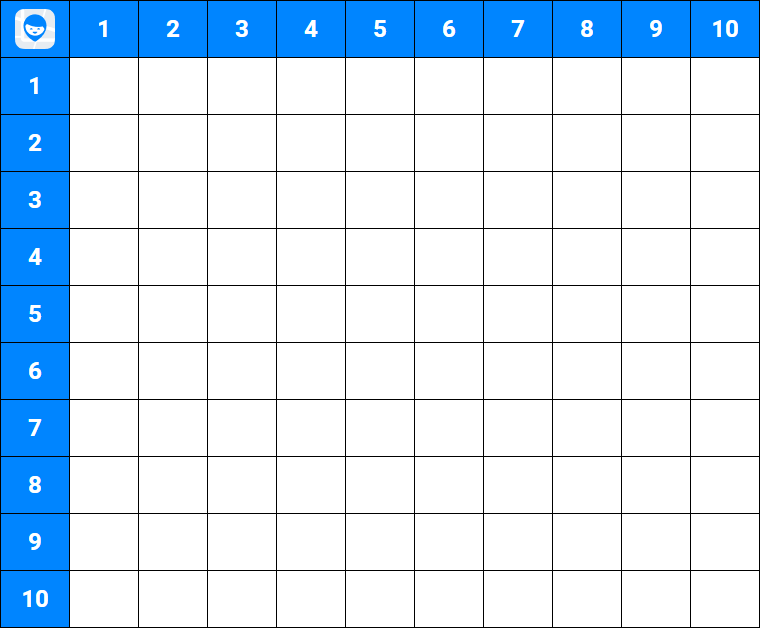
- Fill in the empty cells together with the child. With many of them the younger student will cope on their own. Tell them that it is enough to add 2 and 2, and then to be adding 2 to each result, thus having 4 + 2 = 6, 6 + 2 = 8, etc.
Fill in the remaining empty cells with other multiplication results, such as 3 + 3 = 6, 6 + 3 = 9; 4 + 4 = 8, 8 + 4 = 12, and so on.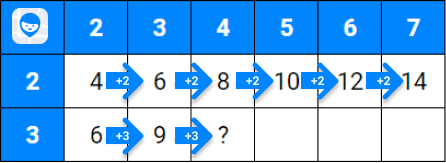
- Don’t forget the fact that, similarly to the principle of addition, the result does not change if the same factors are switched between each other, for example, if you multiply 4 by 6 or 6 by 4, you will get 24 in both cases.
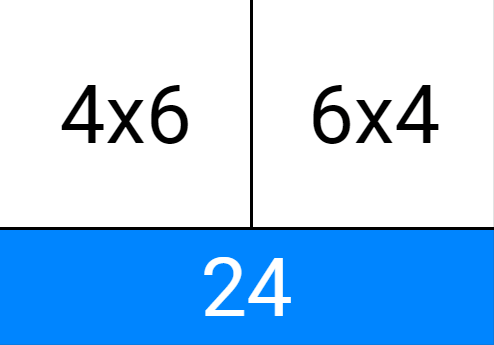
- Help your son or daughter come to the conclusion that almost half of the results repeat themselves, as only the factors are reversed between each other, and therefore, only 55 multiplication results are left to memorize, instead of 100.
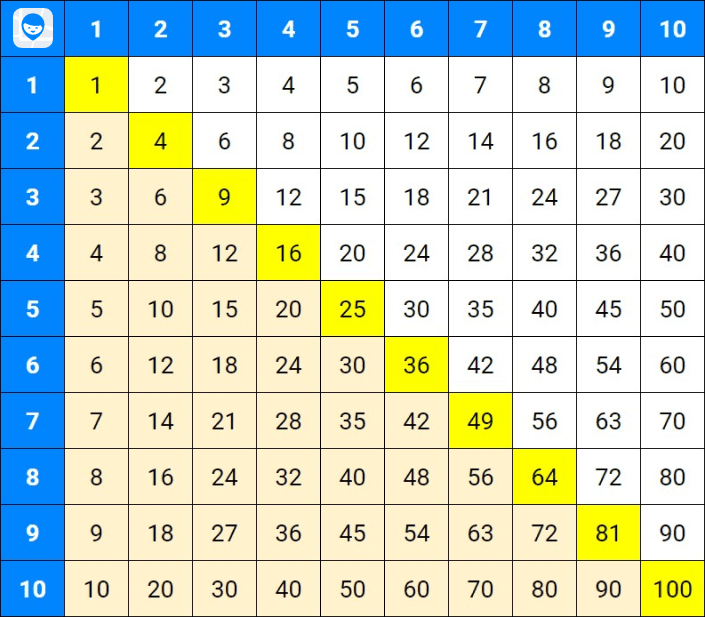
- Show some other sequences that do not need to be memorized, such as the following, to your child:
- a number multiplied by one is equal to itself;
- when multiplying by 10, the result will be equal to the number with an added 0, as in 2 x 10 = 20, 3 x 10 = 30, etc).
Thanks to the study of multiplication through the Pythagoras table, the child will only have to learn the results of 36 calculations instead of 100.
Multiplication Cards
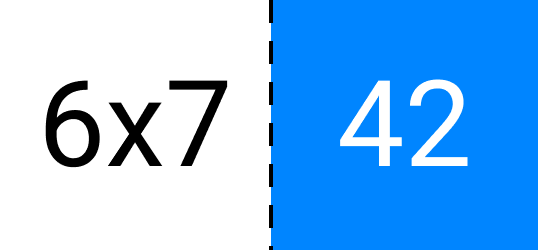
You can use ready-made cards or make them yourself, so that the child will begin to memorize the table during the process of card preparation.
How to learn the multiplication table through cards:
- on a small sheet of paper, the child writes the action on one side and the correct answer on the reverse side of the same sheet; for example, 6 x 7 on the front side, and 42 on the back;
- you can write all of the examples from the table on the cards, having left those that cause difficulties for the child for later;
- incorporate some elements of play into the learning process: you can set a goal for the child to provide the maximum number of correct answers out of a hundred or to call out the multiplication results by speed.
Board Games
The method is especially well-suited for very active children; this way, some rather complex information is gradually memorized in the form of an entertaining game. You can use ready-made games that are built on the principles of multiplication and/or division (this topic will also be covered in the third grade’s curriculum).
Another option is to play the usual placement and advancement types of games with modified rules and with the number of moves multiplied by 2, 3, or any other number less than or equal to 10.
From Simple to Complex
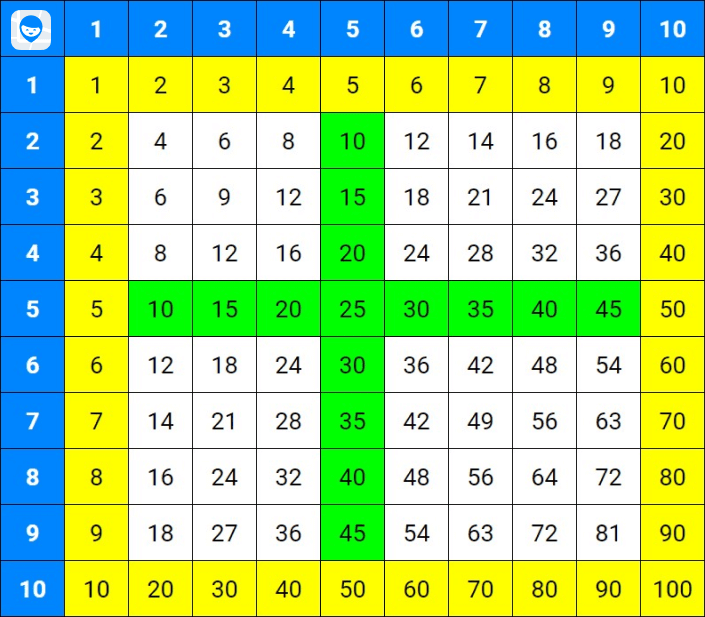
Children memorize the table more easily when they do not learn it in one go, but rather move from simple to more difficult multiplications. Try to present the multiplication table in the following order:
-
- units and tens: the simplest linear examples, such as numbers multiplied by 1 that remain the same, and numbers multiplied by 10 having an extra 0 added;
- by 5: when multiplying an even number by 5, the result will be an even number ending in a 0, such as in 2 x 5 = 10, 4 x 5 = 20, and when multiplying an odd number by 5, the result will be an odd number ending in 5, such as in 7 x 5 = 35 and 9 x 5 = 45;
- by 2 and by 4: multiplying by 2 always results in the same number added to itself, as if being doubled, as in, for instance, 2 x 2 = 4, 3 x 2 = 6; multiplying by 4 is the same as by 2, but double the amount, which essentially means multiplying the number by 2 and adding the same number to it. Here is an example: 2 x 4 = 2 x 2 + 4 = 8);
- by 9. Here are some methods to memorize it with the use of fingers:
- Have the child turn their palms up and mentally attribute a number to their fingers from 1 to 10, counting from left to right (starting with the thumb of their left hand).
- ask the child to bend that finger on the count that corresponds to the number multiplied by 9, for example, when multiplying 3 by 9, you need to bend the third finger on the left hand. The remaining two fingers to the left are your tens and the seven fingers to the right are units, therefore the result is 3 x 9 = 27;
- by 3, 6, 7, 8: you can have the child learn them by heart or incorporate other visual methods, such as cards, posters, rhymes, board games, as well as try to learn it with the finger counting technique.
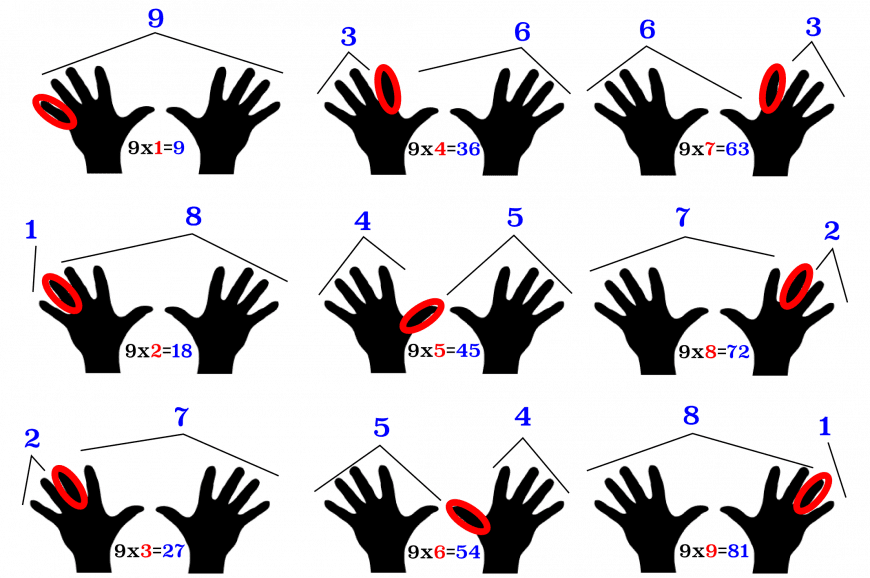
Credit: kunduz.com
Lifehack: Multiplying With the Help of Your Fingers
Multiplication with the use of the fingers is possible not only when multiplying by 9, but also by any factor greater than 5. This method is called the “Chisanbop”. It may be a little more complicated with numbers other than 9, however a young student will still be able to understand it.
The method is the following:
- The fingers of both hands must be mentally numbered in a certain sequence from left to right, with 6 on the little fingers, 7 on the ring fingers, 8 on the middle fingers, 9 on the index finger, and 10 on the thumb.
- Try to multiply 6 by 8: connect the corresponding 6th little finger of the left hand and the corresponding 8th middle finger of the right hand.
- The two connected fingers and the number of fingers under them are tens, which in our case there are 4.
- The number of fingers that are above the little finger (4) and above the middle finger (2) must be multiplied by each other. They represent the units, thus 4 x 2 = 8.
- Connect tens and ones, and you will obtain the correct answer: 6 x 8 = 48.
Try to solve the rest of the multiplications from the table with factors from 6 to 10 together with your child, which will allow them to understand the method very quickly.
Quick Learning: Multiplication Table Training Exercises
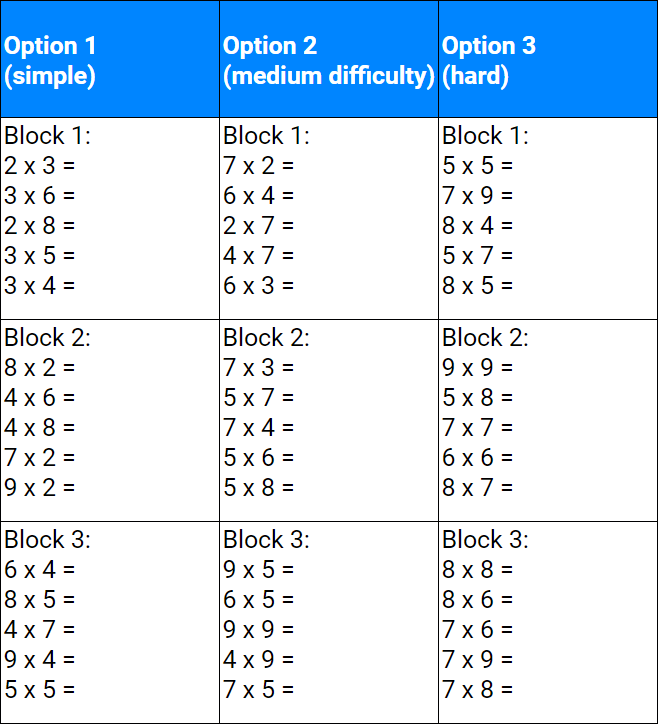
Visual training options will help the child to quickly memorize the table: you can buy ready-made ones or prepare the materials by yourself.
A training option with random examples from the multiplication table can be found above.
The exercise contains three options with three blocks, and each next variation and section will be more difficult than the previous one. Proceed to a more complex option or to the next section after the child has mastered the basic one.
When the child can easily memorize all of the options, try switching their places and adding new ones.
Tips for Parents and Small Tricks

Daniel Jedzura/Shutterstock.com
Here are some simple tips that are sometimes forgotten; they will definitely help your child to retain information in a quick and stress-free manner:
- let the child memorize the multiplication table gradually, starting with the simplest multiplications and gradually moving on to more complex cases;
- devote enough time to repetition: at first, multiplication results can be asked in their order of progression, and when the child becomes more confident in giving the correct answers, they will comfortable in providing the answers in a random order;
- monitor the speed of the answers: when the child has just started learning, their answers may be slow, but over time, you can start asking them to answer a little faster;
- try to maintain the child’s stable emotional state: do not scold them for mistakes, do not compare them with other children and praise their small and large achievements;
- try to use multiplication in practice: when counting sweets in packages, the number of light bulbs in rooms, the paws of dogs on the streets… everything that can be multiplied.
One more little trick that will help the child learn the multiplication table faster: when incorporating game elements to the learning process, take into account the character traits of your child. Right from elementary school, it will already be clearly visible in what form the student best retains new information: through hearing, visually or through the touch.
Select the right play-based training material based on the personal character traits of the child:
Poems and Songs
A method for audials, those who best perceive information by hearing it: ask the child to record themselves repeating the multiplication table, for instance, on their phone, and to listen to it from time to time.
Teaching Videos and Cartoons, Posters and Coloring Books
An option for visuals that best retain information through seeing it.
Cards and Fingers

Gregory Johnston/Shutterstock.com
Cards which allow to make up various multiplications and finger multiplication are best for kinesthetics who effectively memorize material with the help of touch and movement.
Feel free to opt for any teaching method that will work for your child. It will be difficult, however, only at the start and for a short amount of time. Constantly repeating the multiplication table will enable the child to remember it in a matter of a month, and even the complex cases will soon become simple for them!
The picture on the front page: Nina Buday/Shutterstock.com
Проверьте электронный ящик














